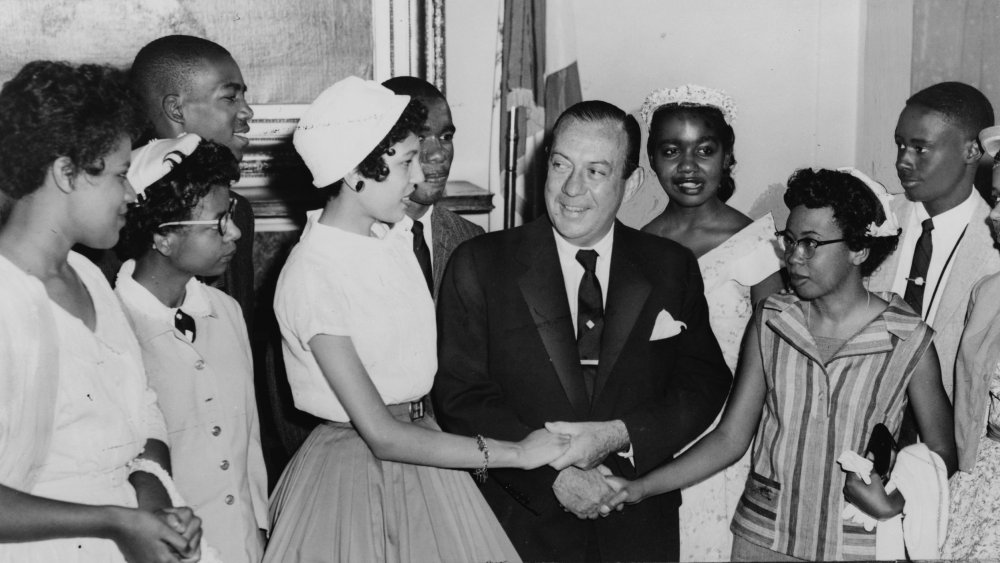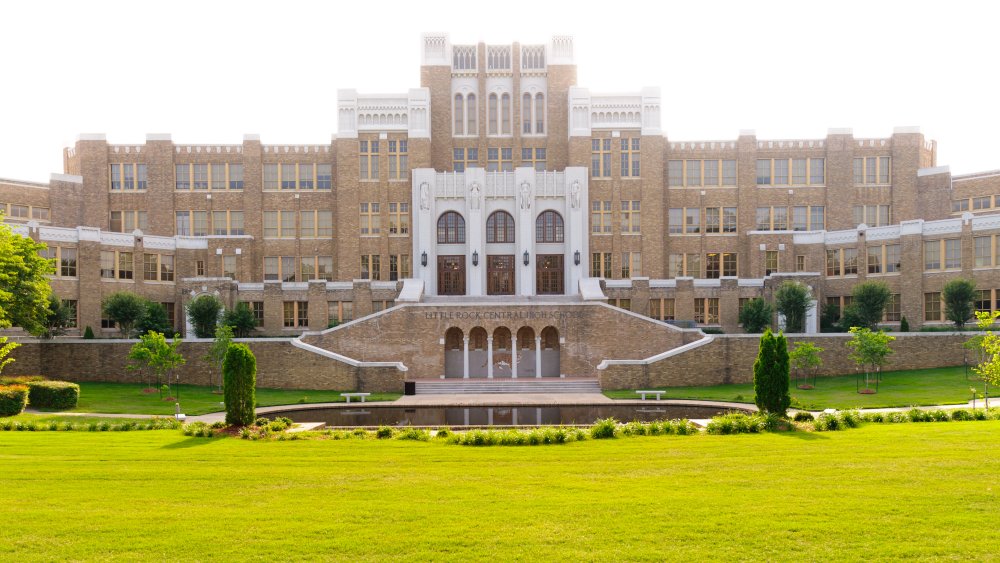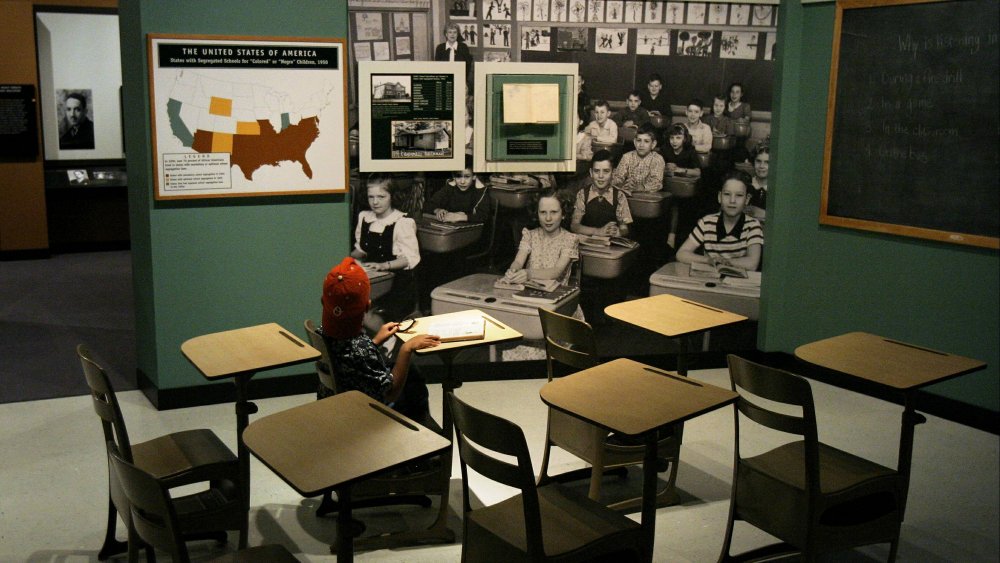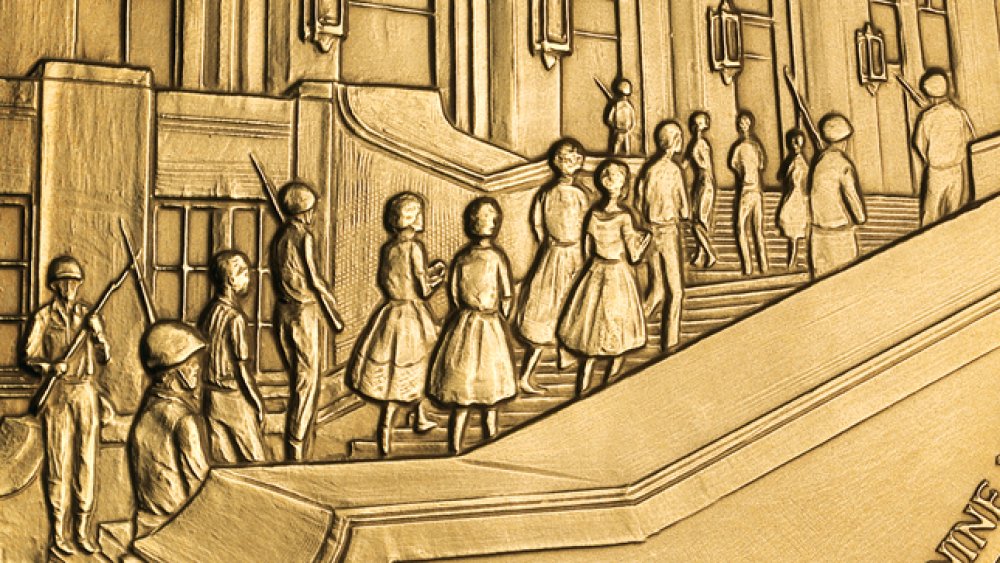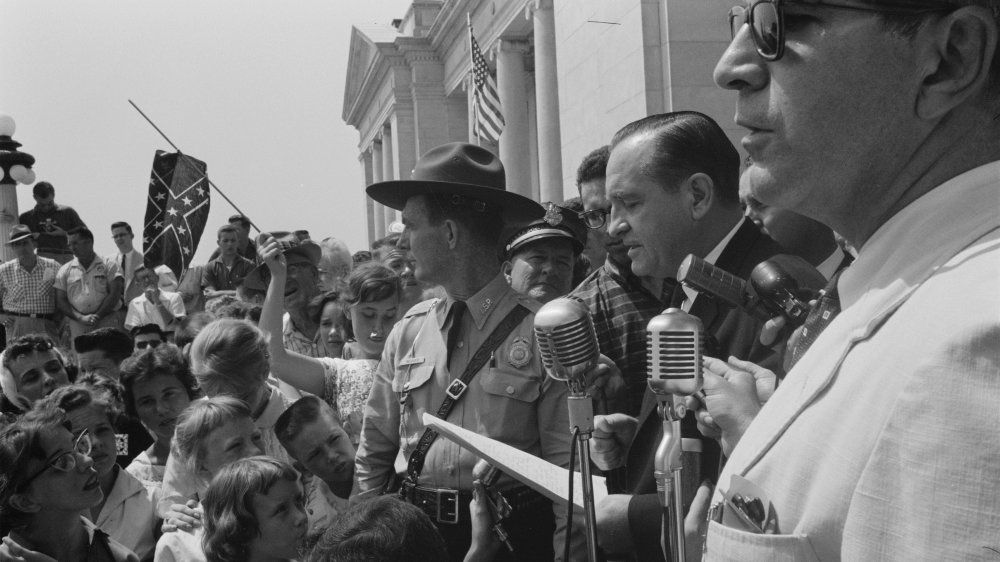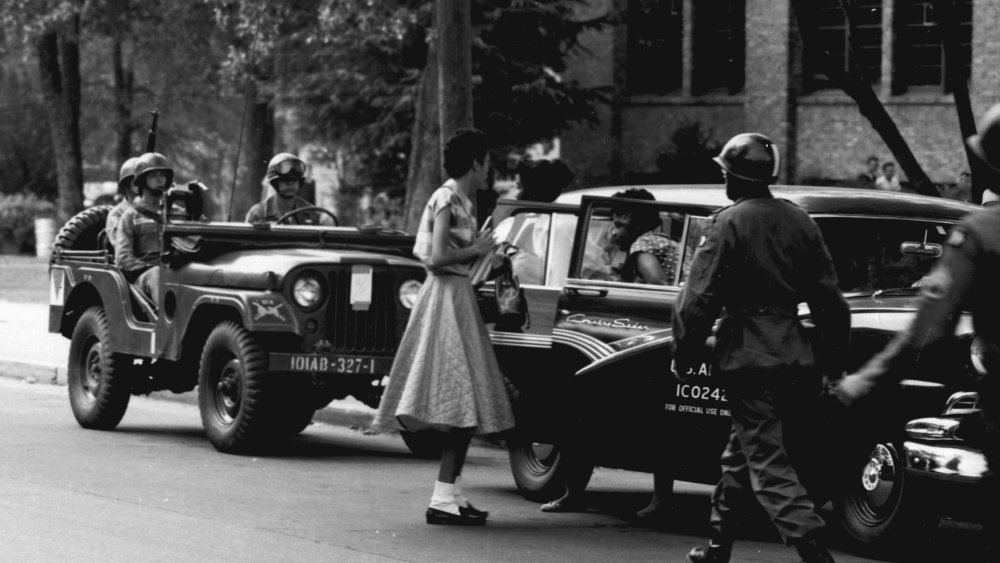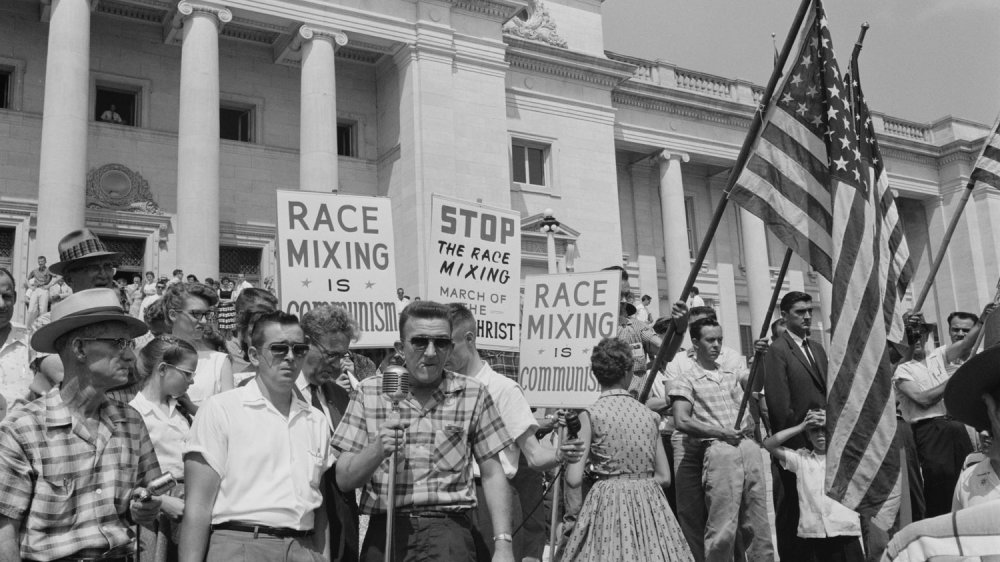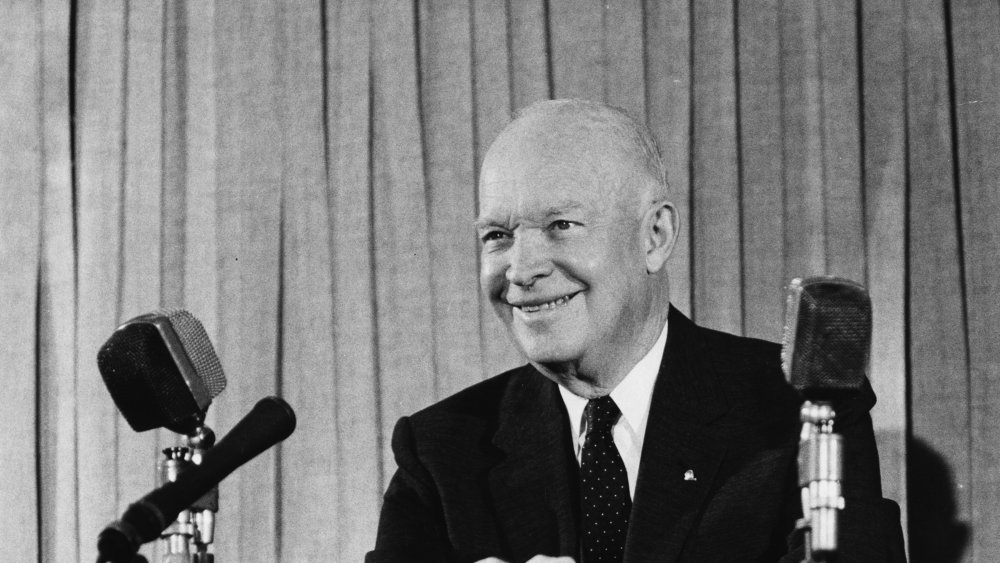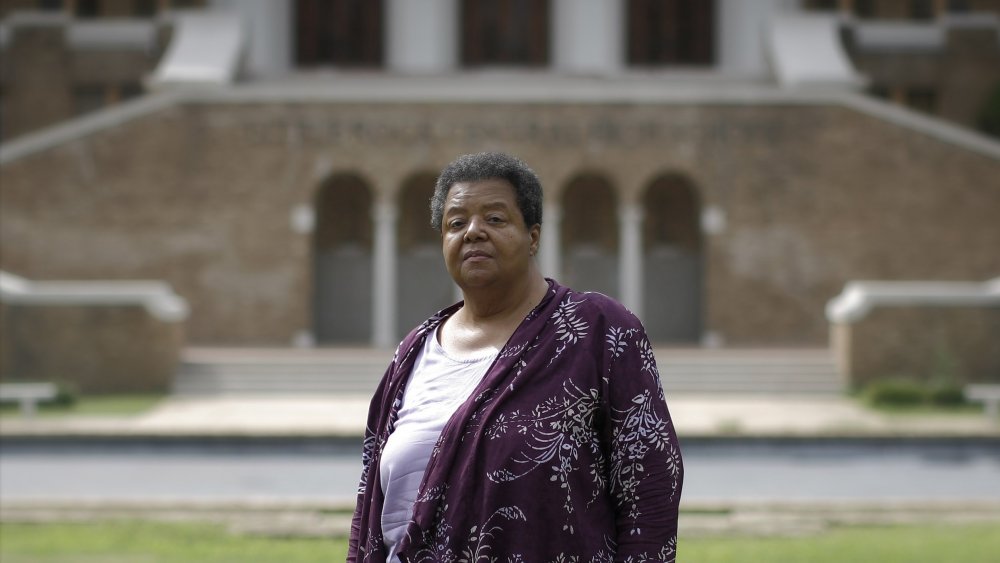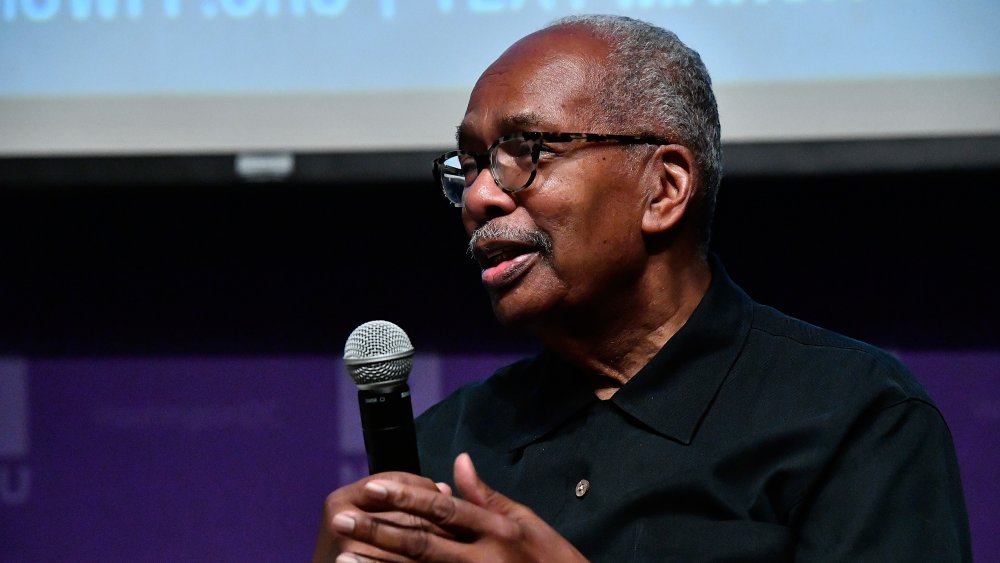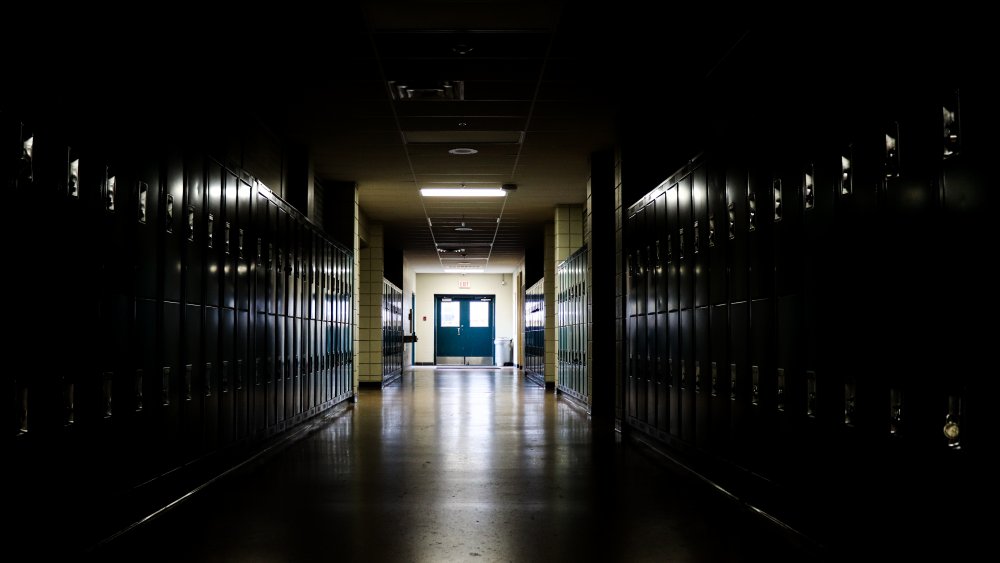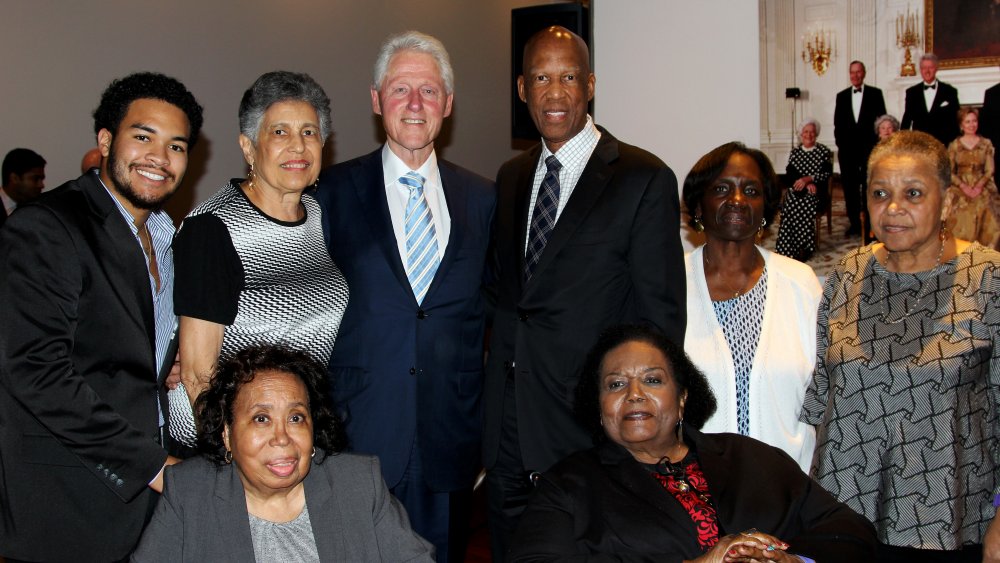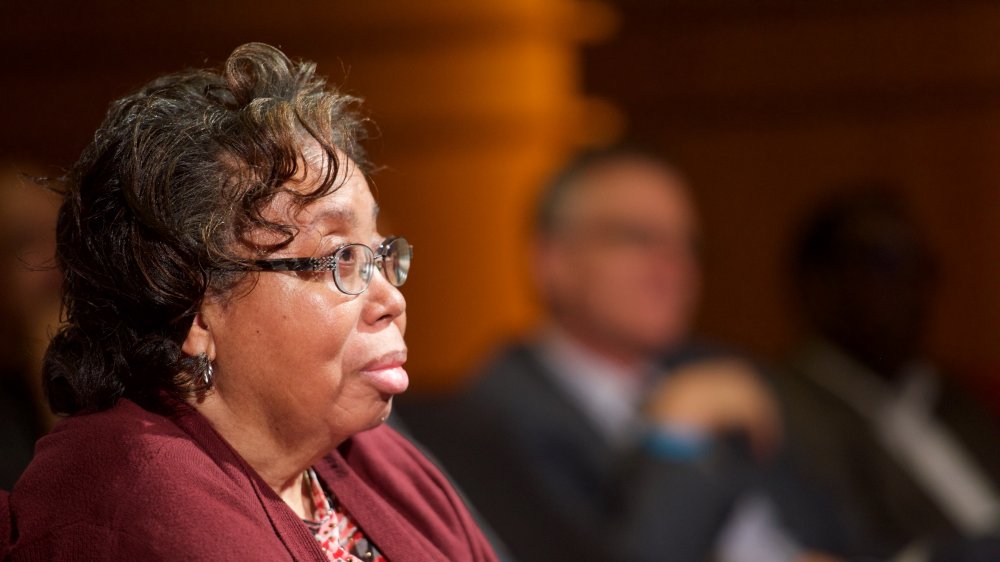What Happened To The Little Rock 9?
The 1950s were an era of transformative pushbacks on segregation laws. In 1955, Rosa Parks famously refused to give up her seat to a white man on the back of a Montgomery, Alabama, bus and was arrested for her defiance. This sparked the Montgomery bus boycott and a national conversation about whether the Southern states of America were truly ready for integration. Enter nine black students in Little Rock, Arkansas, who volunteered to integrate Central High School in 1957, which, up until that point, had an all-white student population.
The Little Rock Nine's venture into desegregating their high school is now considered to be the first real test of the Brown vs. The Board of Education ruling. Not just that, but Little Rock became a pilot study of how federally granted civil rights hold up when states resist them. Federal troops hadn't been called in to protect civil rights since the Reconstruction era, but that all changed in the fall of 1957 in Arkansas.
This is the story of the Little Rock Nine and their courageous fight to integrate public schools in Arkansas, a state that was doing everything to combat the tide of change.
Integration becomes law in Little Rock
The landmark May 17, 1954, ruling of Brown vs. The Board of Education of Topeka, Kansas had made the segregation of public schools in America unconstitutional. However, that didn't necessarily immediately dismantle Jim Crow laws, which, since 1865, had separated white and black people in public spaces like inns, theaters, and schools. Many school districts were hesitant to take on the shift to integration, so in 1955, a second ruling known as Brown II was issued to push schools to act to integrate "with all deliberate speed", describes History.
Little Rock, Arkansas, long entrenched in Jim Crow laws, initially planned to integrate their elementary schools first, per the Encyclopedia of Arkansas. When the parents of elementary school-aged children adamantly protested, authorities switched gears. Encouraged by the local NAACP chapter, the school board in Little Rock decided to integrate Little Rock Central High School by 1957. This would, of course, be an effort of token desegregation — just enough to comply with the law but not enough to foster comprehensive change throughout the district.
The Blossom Plan to desegregate Little Rock
School superintendent Virgil Blossom helmed the preparations to integrate the Little Rock school system. The Encyclopedia of Arkansas explains that his plan was fairly unambitious and gradual — Little Rock would integrate one high school by 1957, integrate a few junior high schools by 1960, and desegregate the rest of the grade schools by as late as 1963. The Blossom Plan even allowed for districts to be gerrymandered, so white students had the option of attending school outside of their zone and were allowed to transfer if their race was in the minority. The school board unanimously approved the Blossom Plan.
There was a rash of criticism for the plan from the NAACP, and they filed a lawsuit against the school district on February 8, 1956, after 33 black students were banned from registering to Little Rock schools, per the National Park Service. The case was dismissed, and the state did everything to drag its feet. In the months leading up to school integration, the Arkansas legislature passed four segregation bills which investigated those fighting for integration, put a three-percent sales tax on the election ballot, and granted schools permission to use their funding to actively fight integration. The political deck was stacked against them, but that fall, black students planned to enroll in an all-white Arkansas public high school.
Who were the Little Rock Nine?
The nine students who registered to be the first black students at Little Rock Central High School were Minnijean Brown, Elizabeth Eckford, Ernest Green, Thelma Mothershed, Melba Patillo, Gloria Ray, Terrence Roberts, Jefferson Thomas, and Carlotta Walls. Daisy Gaston Bates, the president of the Arkansas chapter of the NAACP, handpicked these students to lead the first wave of integration because of their determination, good attendance, and high grades. These nine teenagers became the faces of desegregation in the American South, according to Britannica.
The Little Rock Nine, as they came to be known, took on counseling sessions and were trained to deal with hostility by members of the NAACP in the weeks before school started. As Minnijean Brown later told The Guardian, the Little Rock Nine were initially unaware of the significance of their enrollment and had instead decided to attend Central High because of its better funding and location. The Nine had excitedly prepared their outfits and shoes for their first day at a new school. Brown (who later took on the married name Trickey) recalled, "I was thinking: 'Wow! I can meet some other kids.'" That sense of optimism and change, however, would be met with vicious racism from their neighbors all the way up to their governor.
The Little Rock Nine face racist opposition
There were calculated attacks against the desegregation plans in Little Rock made by organizations like the Capital Citizens Council and Mother's League of Central High School. As told by the National Park Service, the Capital Citizens Council ran attack ads in local newspapers, asking citizens bigoted questions like, "Would black and white students use the same rest rooms?" The Capital Citizens Council was arguing that black children had enough public schools and there was no need to integrate, "except to satisfy the aims of a few [...] revolutionaries." In August 1957, Arkansas Governor Orval Faubus held an anti-integration meeting and praised the efforts of local groups to deter the black students from joining Central High School. Faubus publicly fueled rumors that white supremacists were headed to Little Rock to stop the desegregation.
In September 1957, on the eve of the first day of classes, the Mother's League held a sunrise service protest at the school, where the crowd sang "Dixie" and flew the Confederate flag. Despite a groundswell of opposition and threats from white Little Rock citizens, federal judge Ronald Davies maintained that the Little Rock Nine would go to school as planned, per History.
The Little Rock Nine arrive at Central High School
On September 4, 1957, the first day of school, Governor Orval Faubus sent the Arkansas National Guard to be stationed at Central High — insisting that it was for the safety of the new students. When eight of the nine black students arrived at school that morning, they encountered a mass of white protesters. The National Guard, lined up at the entrance, ordered the students' NAACP chaperones to turn around and take them home. It was clear that Faubus wasn't trying to protect the students, but rather placate the angry horde, according to Smithsonian Magazine.
When Elizabeth Eckford arrived at school separately that day, she was met by the National Guard with bayonets and mobbed by white students and parents. Eckford recalled, "They moved closer and closer. Somebody started yelling. I tried to see a friendly face in the crowd, somebody who could maybe help. I looked into the face of an old woman and it seemed a kind face. But when I looked at her again, she spat on me," as reported by America's National Parks Podcast.
None of the Little Rock Nine entered school that day. In the following days, Governor Faubus doubled down on his segregationist beliefs, only for lawyer Thurgood Marshall and federal judge Ronald Davies to order that the National Guard be removed from the school. This school showdown, between violent segregationists and schoolchildren, would take center stage that fall.
All eyes on the Little Rock Nine
One iconic photograph of the first day of school circulated in the media. Taken by Will Counts of the Arkansas Democrat, in the picture, a composed Elizabeth Eckford, in a white dress, sunglasses, and clutching a notebook, is pursued by a mob of shrieking white students. Following the incident, journalists who covered the Little Rock crisis with sympathy for the students were threatened and mobbed as well. All eyes in America were on Little Rock, the behavior of their National Guard, and virulent hatred that had been unveiled.
As reported by Biography, musician Louis Armstrong spoke to a journalist about his outrage and disgust about what happened to the students at Central High School. Even Martin Luther King Jr. sent President Dwight D. Eisenhower a request that he intervene in Little Rock or else "set the process of integration back fifty years," according to the Martin Luther King Jr. Research and Education Institute.
What had been uncovered for the country was the South's ongoing system of educational apartheid, which nine brave children were now challenging. It had become a turning point that could not be ignored any longer.
Eisenhower steps in during the Little Rock Crisis
On September 23, the Little Rock Nine were able to enter Central High School for the first time, but the school day was short-lived. Per The Guardian, a mob of over 1,000 white people swarmed the school and sang racist chants. For their safety, the Little Rock Nine exited the school from a basement and were escorted by police to their homes at around 10:00 AM. The hate-fueled riots outside Central High School came to be known as the Little Rock Crisis.
President Dwight D. Eisenhower, urged by Little Rock mayor Woodrow Wilson Mann and King's telegram, decided to step in. On September 24, President Eisenhower sent in 1,200 members of the US Army's 101st Airborne Division from Fort Campbell — without its black members, that is — to oversee and federalize the Arkansas National Guard. The troops proceeded with the integration of the school and did their best to disperse the demonstrators. It wasn't until September 25, a full 21 days after the first day of school, and still surrounded by a crowd of white protesters, that the Little Rock Nine were able to attend a full day of classes.
That day of classes had been hard-won. "Any time it takes eleven thousand five hundred soldiers to assure nine Negro children their constitutional rights in a democratic society, I can't be happy," said the students' NAACP mentor Daisy Bates, as told in The Little Rock Desegregation Crisis.
A year of harassment for the Little Rock Nine
It would be all too easy to paint the Little Rock Nine entering Central High School as a success, but the truth is that the 1957 school year was anything but a peaceful education. After a month, the 101st Airborne cleared out of Arkansas and left the students' safety in the hands of the local police and the Arkansas National Guard. That didn't stop the Little Rock Nine from being subjected to a litany of outrageous harassment, which included being knocked down stairs, spat on, kicked, choked, assaulted with food, and pelted with snowballs. Additionally, the black students were banned from extracurricular activities.
Melba Patillo Beals recalled to NPR that she was assaulted in many forms, and the "most dangerous way was, a gentleman passes you with a plastic toy gun. [...] You're going to get acid in your eyes. And that's what happened to me."
One white student even hung an effigy of a black person on a tree nearby the school and set it on fire, according to an October 1957 report from The Guardian. Fed up with the habitual brutal treatment she got at lunch from a group of boys, in February 1958, Minnijean Brown dropped her bowl of chili near them in the cafeteria — and for that, she was expelled from Central High School. The 1957 school year, where the Nine were escorted to class by the police, would haunt them for the rest of their lives.
Ernest Green becomes a graduate of Central High School
Ernest Green had been the only senior of the Little Rock Nine who had enrolled at Central High School for the 1957-1958 school year. It was an experience Green told the Associated Press was "like going to war every day. You had students who tried to use as much verbiage as they could to intimidate us. We had threats and comments that we would be killed."
Despite the harassment, Green was still set to graduate that spring. Green recalled to the AP that the high school principal told him at one point that he didn't have to come to the ceremony, that they would mail Green his diploma. However, Green didn't endure a year of torment just to skip his own graduation ceremony.
On May 25, 1958, Ernest Green became the first of the Little Rock Nine to graduate from Little Rock Central High School. In attendance, quietly, was Martin Luther King Jr. himself, as told by the Martin Luther King Jr. Research and Education Institute. Green's graduation was an achievement for all nine of the black students who had taken on the mobs of Little Rock, but the next year, their efforts were stalled.
The lost school year
One year after the Little Rock Nine first enrolled at Central High, Governor Faubus shut down all four of Little Rock's high schools and held a public vote on school integration. Turning back the clocks with their ballots, Little Rock had voted 19,470 to 7,561 against desegregation. These high schools — which included Central High, Hall High, Little Rock Technical School, and Horace Mann School — didn't reopen until August 1959. With 3,665 students prevented from getting a public education, it became known as the "Lost Year" of Little Rock's schools, as reported by the Encyclopedia of Arkansas.
Peculiarly, during this time, Little Rock teachers were still asked to be in their classrooms, and high school football games were still played. While private schools popped up to accommodate displaced white students, no similar institutions opened for black students, and 50 percent were left without any schooling at all. Others completed their courses through correspondence with other high schools, transferred to another Arkansas district, enrolled in the military, or married young.
In May 1959, after 44 teachers and administrators were fired, three new moderate members joined the school board and gave it a pro-integration slant. A federal district court ruled that the school closures had been unconstitutional and that schools would reopen. There were still threats and harassment directed at black students, but finally, Central High School had been integrated. By 1971, Little Rock public schools would be fully integrated with the use of busing.
The Little Rock Nine's legacy
The Little Rock Nine students went on to achieve careers of great success after they graduated, as reported by The Guardian. The academic achievements, fortitude, and perseverance they displayed as teenagers served them well as adults.
Minnijean Brown Trickey attended school in New York after she was expelled from Central High. She went on to become deputy assistant secretary for workforce diversity in the Department of the Interior during the Bill Clinton years. Melba Patillo Beals became a journalist, author, and educator. Carlotta Walls LaNier became a property broker, Gloria Ray Karlmark became an aerospace research technician, Elizabeth Eckford became a probation officer, Terrence Roberts became a psychologist, Thelma Mothershed Wair worked as a teacher, and Jefferson Thomas served in Vietnam before working for the Defense Finance and Accounting Service in Columbus, Ohio. Ernest Green, the first Little Rock graduate, became the assistant secretary of the Department of Labor during President Jimmy Carter's term.
In 1999, per History, the Little Rock Nine were awarded the Congressional Gold Medal by President Bill Clinton. The nine also received personal invitations to attend Barack Obama's inauguration in 2009 and to this day are revered icons of the Civil Rights movement.
The Little Rock Nine look to the future
Over 60 years later, the Little Rock Nine symbolize a struggle still alive today: What do we do when civil rights are only theoretical for black Americans? After all, the makeup of American schools hasn't improved much since the Nine first walked into Central High in 1957.
On average nationwide, black students in 1980 went to a school that was 36-percent white. In the 2014-2015 school year, black students attended schools that were 27-percent white, per AP News. The racial gap in public schools is widening — with white students attending less and less diverse schools. "What kind of country doesn't see education for all children to be the primary value?" Minnijean Brown Trickey said to The Guardian about the resegregation she has seen in recent years. "I think the US has two values: segregation, which they do so well, and violence."
In fact, the Little Rock school district they first integrated, which is now two-thirds black, has been put under state control since 2015 due to low academic performance. Reflecting on whether anything has changed since they first entered Central High School, the Little Rock Nine see the current era as just another chapter in the ongoing battle. "You can't separate it into time periods, as if it's changed," said Terrence Roberts told CNN. "It hasn't."
